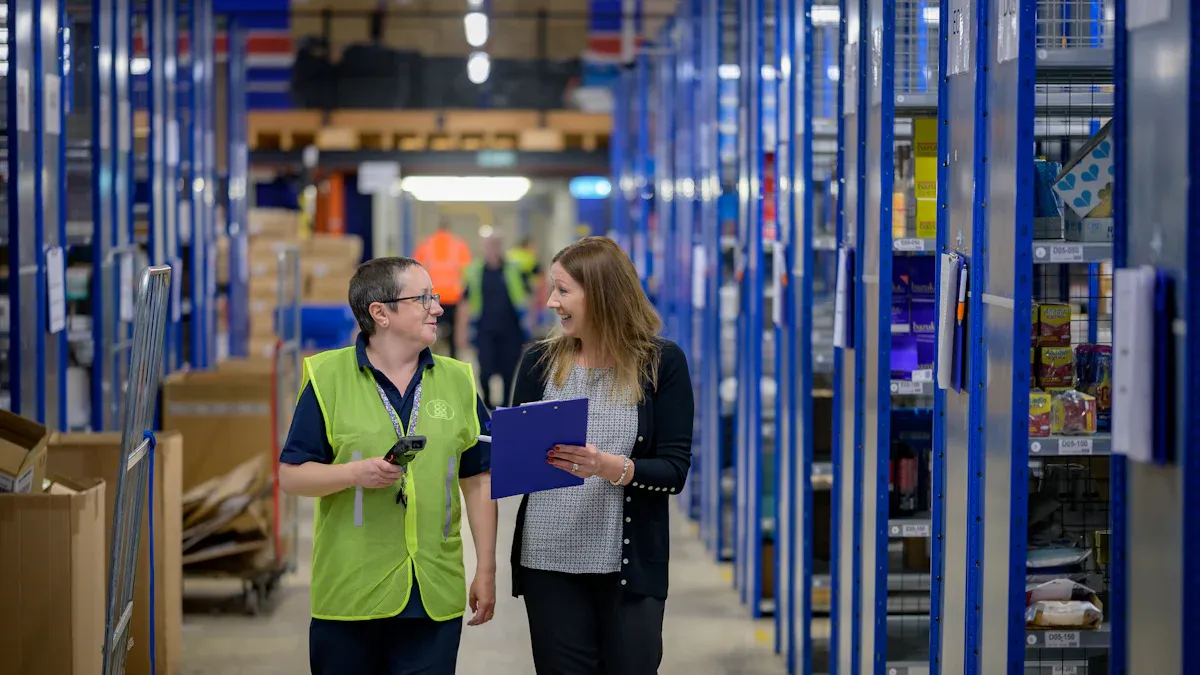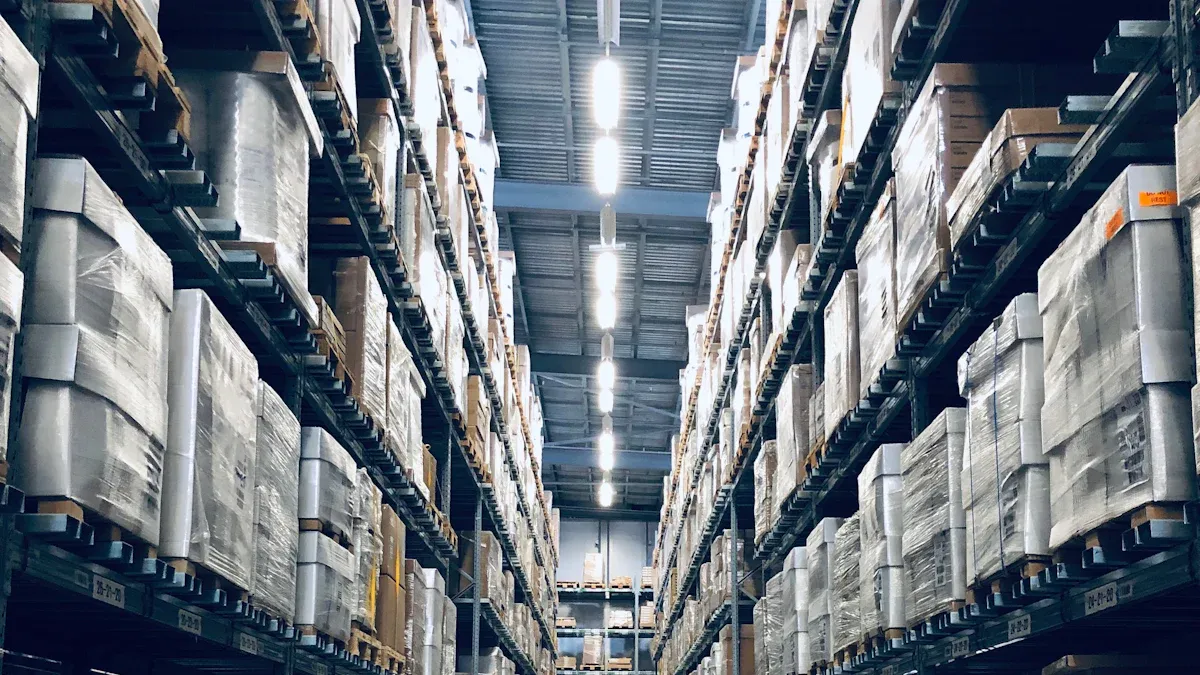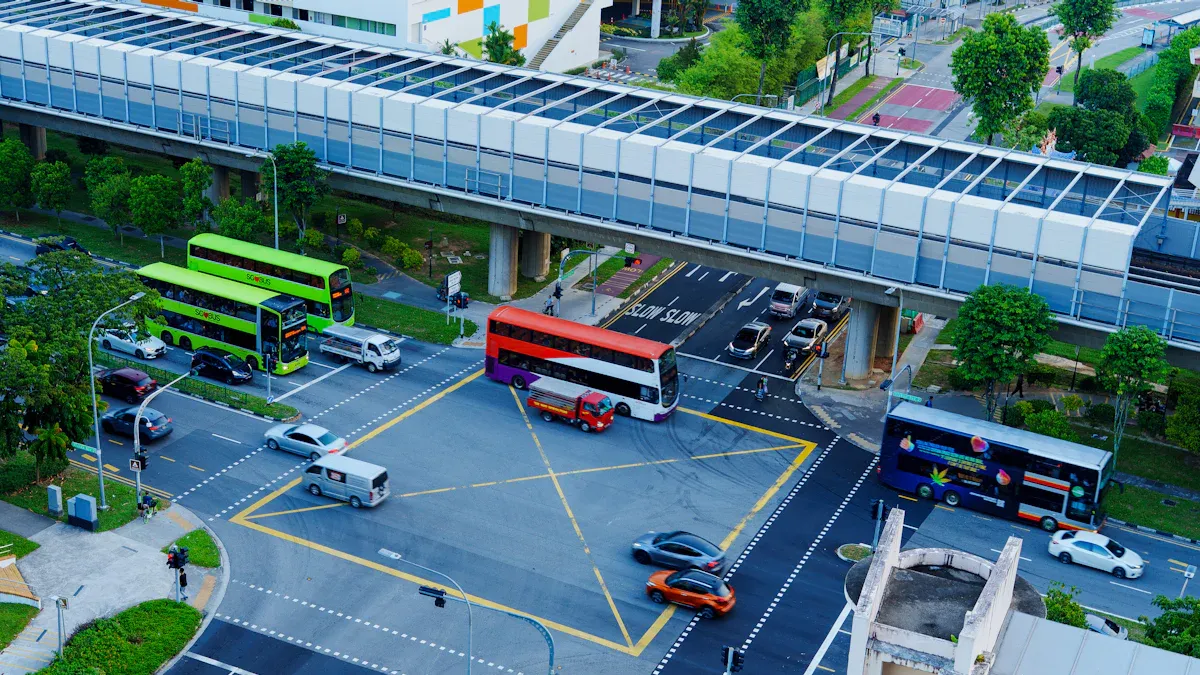Five-Minute Quick Guide to WMS and TMS Systems

Imagine you run an electronics business with warehouses all over the world. You need to track every product and make sure orders reach customers fast. WMS and TMS Systems help you manage warehouses and transportation, so you can solve supply chain headaches and stay ahead with smart technology.
Key Takeaways
WMS and TMS systems help you manage warehouses and transportation efficiently, cutting costs and speeding up order delivery.
Integrating WMS and TMS creates real-time visibility and smooth data flow, boosting productivity and reducing errors across your supply chain.
Start with clear goals, involve your team, and train staff well to overcome challenges and unlock big improvements in speed, accuracy, and customer satisfaction.
WMS Overview

Definition
A Warehouse Management System (WMS) is software that helps you control and organize everything inside your warehouse. It tracks products, manages storage locations, and keeps tabs on your team’s work. With a WMS, you always know what’s in stock, where it’s stored, and how fast you can get it out the door. This system acts like the brain of your warehouse, making sure every item moves smoothly from receiving to shipping.
Core Functions
WMS does a lot more than just keep a list of what’s on the shelves. Here’s what you can expect:
Product Management: Track every SKU, including size, weight, and special storage needs.
Storage Location Management: Assign the best spots for each product, so you find things quickly.
Personnel Management: Monitor worker productivity and plan shifts, especially during busy seasons.
Capacity Management: Check if you have enough space and plan for peak times.
Order Processing: Handle receiving, picking, packing, and shipping with accuracy.
Tip: A good WMS connects with your ERP system, so orders and inventory always match up.
Key Benefits
When you use a WMS, you see real results. Companies often cut order picking time by 25% and reduce inventory costs by 15%. Labor productivity can jump by 15-30%, and order accuracy often reaches 99.8%. Here’s a quick look at the numbers:
Metric | Typical Improvement |
|---|---|
Inventory discrepancies | Reduced by up to 99% |
Order fulfillment rates | Increased by up to 25% |
Labor cost reductions | Reduced by up to 20% |
Warehouse space usage | Up to 30% more efficient |
With these gains, you can serve customers faster, save money, and grow your business with confidence.
TMS Overview
Definition
A Transportation Management System (TMS) is software that helps you plan, execute, and track the movement of goods. You use TMS to manage shipments from suppliers to your warehouse and from your warehouse to customers. It gives you control over every step, from choosing the best carrier to tracking deliveries in real time. With TMS, you can see where your products are, how much you spend on shipping, and how to make your transportation network more efficient.
Core Functions
TMS does more than just schedule trucks. Here’s what you can expect:
Route Optimization: Find the fastest and most cost-effective routes for every shipment.
Carrier Management: Compare rates and performance from different carriers, then pick the best option.
Freight Audit and Payment: Automate billing and reduce errors in invoices.
Shipment Tracking: Monitor shipments in real time and get alerts for any delays.
Analytics and Reporting: Use data to spot trends, negotiate better rates, and improve service.
Note: TMS can connect with your WMS and ERP systems, so you get a complete view of your supply chain.
Key Benefits
When you use TMS, you see real savings and better performance. Companies often cut transportation costs by 5% to 15% each year. Delivery times improve by about 10%, and on-time delivery rates go up. You also spend less time on manual tasks, which means your team can focus on bigger goals. Here’s a quick look at what TMS can do:
Benefit | Typical Improvement |
|---|---|
Transportation cost reduction | |
Delivery time improvement | 10% average |
On-time delivery increase | 9% |
Operational efficiency | 15% |
TMS helps you scale your business, keep customers happy, and make smarter decisions with real-time data.
WMS and TMS Systems Integration

Why Integration Matters
You might wonder why you should connect your warehouse and transportation systems. When you integrate WMS and TMS Systems, you create a single flow of information from the warehouse floor to the delivery truck. This means you can see everything that happens, from the moment goods arrive to the moment they reach your customer.
Here’s what happens when you bring these systems together:
You eliminate duplicate data entry, which means fewer mistakes and less wasted time.
Real-time inventory tracking lets you know exactly what you have and where it is.
Route planning becomes smarter, so you save on fuel and deliver faster.
Your warehouse and transportation teams work together better, which boosts efficiency and keeps customers happy.
When you use WMS and TMS Systems together, you can cut operational costs by up to 30% and see higher profits. Some companies save an hour per shipment just by automating data flow. You also get fewer errors, because everyone uses the same information.
JUSDA takes this integration to the next level. With the JusLink platform, you get real-time data sharing between WMS and TMS Systems. JusLink connects your warehouse, transportation, and even your suppliers on one smart platform. You can track purchase orders, cargo locations, and delivery times all in one place. The system uses AI to predict arrival times and spot risks before they become problems. You get instant alerts if something goes off track, so you can fix issues fast.
End-to-End Visibility
Imagine being able to see every step of your supply chain, from the first order to the final delivery. That’s what end-to-end visibility means. When you integrate WMS and TMS Systems, you get a clear view of your inventory, shipments, and orders at all times.
Let’s look at what this can do for you:
You can spot shortages before they happen and adjust your purchasing plans.
You get dynamic inventory forecasting, so you never run out of stock.
You can see key performance indicators (KPIs) for every part of your supply chain, which helps you make smarter decisions.
You can work with suppliers and logistics partners in real time, using instant notifications and shipment updates.
JUSDA’s JusLink platform gives you this level of control. It brings together sales data, inbound and outbound plans, and in-transit inventory. You can manage everything from procurement to customer delivery on one dashboard. The platform’s control tower feature shows you the big picture and the small details, so you can react quickly and keep your supply chain running smoothly.
Here’s a quick look at the benefits companies see when they integrate WMS and TMS Systems:
Benefit | Typical Improvement |
|---|---|
Productivity | |
Space Utilization | 10-20% better |
Safety Stock | 15-30% lower |
Labor Productivity | Up to 30% higher |
Inventory Cost | Up to 20% lower |
Operational Cost | Up to 30% lower |
Error Rate | Down to nearly zero |
Time Saved per Shipment | About 1 hour |
With JUSDA’s integrated approach, you can handle global supply chain complexity with ease. Whether you work in electronics, FMCG, automotive, or any other industry, you get the tools you need to stay ahead.
WMS and TMS Systems integration is not just about technology. It’s about giving you the power to see, control, and improve every part of your supply chain. When you choose a partner like JUSDA, you get a solution built for the real world—one that helps you grow, save money, and deliver better service every day.
JUSDA Solutions in Action
Real-World Impact
When you use JUSDA’s integrated supply chain solutions, you see real changes in your business. JUSDA brings together AI, IoT, and automation to make your logistics smarter and faster. You get more than just software—you get a system that helps you cut costs, boost productivity, and deliver orders on time.
Let’s look at what this means for you:
You can track every shipment in real time. No more guessing where your products are.
AI-driven route planning helps you use less fuel and avoid delays.
Automation in warehouses speeds up picking and packing, so you get orders out the door faster.
Your customers trust you more because you deliver on time and keep them updated.
Here’s a quick look at the numbers from companies using these technologies:
Metric | Impact Description | Quantitative Evidence |
|---|---|---|
Productivity Increase | AR technology in warehouses | |
Cost Reduction | AI route optimization, predictive upkeep | Lower fuel use, less downtime |
Delivery Time Improvement | Real-time tracking, automation | Faster order fulfillment |
Customer Satisfaction | Reliable, transparent deliveries | Higher trust and loyalty |
Customer Success Story
Let’s talk about Sharp, a global leader in home appliances. Sharp faced big challenges with slow order cycles and high logistics costs. After teaming up with JUSDA, Sharp transformed its supply chain. You see the results right away:
Logistics costs dropped by 20%.
Labor costs fell by 70%.
Order delivery times improved by 30%.
JUSDA’s JusLink platform gave Sharp real-time visibility and smarter coordination. Sharp now manages inventory better, responds faster to customer needs, and keeps costs low. This story shows how JUSDA’s innovation and global reach can help you solve complex supply chain problems and grow your business.
Getting Started
Common Challenges
When you start using WMS or TMS systems, you might face a few bumps in the road. Change can feel tough for your team. Sometimes, people resist new technology because they worry about learning something new. Technical issues can pop up, like software not working with your old systems. Data migration—moving your old records into the new system—can also slow things down.
You might also run into financial or organizational hurdles. Maybe your budget feels tight, or your team needs more training. Integration can be tricky if your warehouse and transportation systems do not talk to each other.
Here’s a quick look at some common challenges and the results you can expect when you overcome them:
System | Common Challenges | Measurable Improvements |
|---|---|---|
WMS | Resistance to change, technical issues, data migration | 25% faster order fulfillment, 10% fewer shipping errors, 15% better accuracy, 10% lower labor costs |
TMS | Technical, financial, personnel, integration issues | 7% lower transportation costs, 5% better on-time delivery, up to 8% cost savings |
Integrated WMS & TMS | — | 20% higher customer satisfaction, 15% better on-time delivery |
When you tackle these challenges, you set your business up for real gains in speed, savings, and customer happiness.
Practical Tips
Ready to get started? Here are some simple steps to help you succeed:
Involve your team early. Ask for feedback and answer questions.
Start with clear goals. Know what you want to improve—speed, accuracy, or cost.
Train your staff. Make sure everyone knows how to use the new system.
Test before you go live. Run a few orders through the system to catch any issues.
Keep communication open. Share updates and celebrate wins.
Remember, every step you take brings you closer to a smoother, smarter supply chain. With the right plan, you can turn challenges into opportunities for growth.
When you use WMS and TMS Systems together, you unlock real gains in speed, savings, and customer satisfaction. Check out these results:
Metric | Typical Improvement |
|---|---|
Warehouse productivity | |
Labor cost reduction | 20% decrease |
Customer satisfaction | 27% higher |
Take a fresh look at your supply chain. JUSDA can help you reach new levels of efficiency. Ready to see what’s possible? Let’s talk!
FAQ
What’s the difference between WMS and TMS?
WMS manages your warehouse operations. TMS handles your transportation and shipping. You use both to control your supply chain from storage to delivery.
Can I use WMS and TMS together?
Yes! You get better visibility and faster order processing when you connect both systems. Integration helps you save time, cut costs, and avoid mistakes.
How does JUSDA help my business grow?
JUSDA gives you real-time data, smart automation, and global support. You can track shipments, manage inventory, and deliver faster. Your customers stay happy, and your business scales up.
See Also
How Robotics In Logistics Boost Warehouse Efficiency And Output
The Importance Of Automating Warehouses For Business Success
Affordable Transportation Management Solutions That Save Your Budget
Complete Guide To Overcoming Challenges In The Supply Chain
Strategies For Managing Risks To Strengthen Supply Chain Flow
